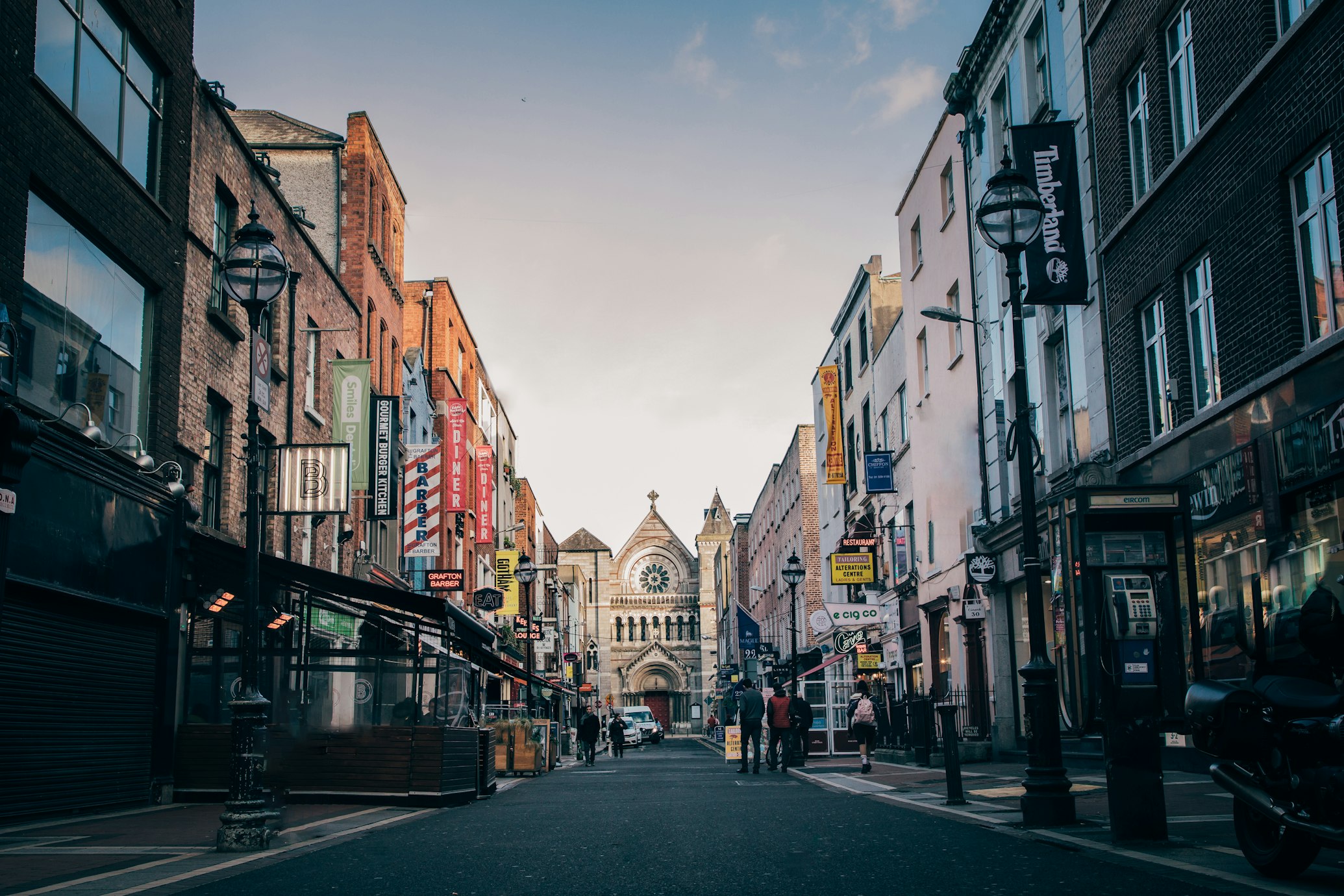Dublin

Dublin, the capital city of Ireland, is a vibrant blend of history, culture, and contemporary energy, known for its literary heritage, lively pub culture, and welcoming spirit. Nestled on the east coast of Ireland, at the mouth of the River Liffey, Dublin is a city where ancient traditions and modern living harmonize, creating a unique and dynamic atmosphere. It’s a place where the charm of the old world meets the innovation of the new, inviting visitors to explore its rich history, bustling streets, and green spaces.
The city’s literary legacy is one of its crowning jewels, with Dublin having produced some of the greatest writers in the English language, including James Joyce, W.B. Yeats, Samuel Beckett, and Oscar Wilde. This literary tradition is celebrated throughout the city, most notably at the Dublin Writers Museum and in the annual Bloomsday Festival, which commemorates Joyce’s seminal work, “Ulysses.” The rich literary history is also palpable in the city’s many historic libraries, such as the Trinity College Library, home to the famous Book of Kells, an exquisite example of medieval manuscript art.
Dublin’s history extends beyond its literary achievements. The city is dotted with landmarks that tell the story of Ireland’s past, from the ancient Dublin Castle, which has stood since the early thirteenth century, to the imposing St. Patrick’s Cathedral and Christ Church Cathedral, both architectural marvels with deep historical roots. The Kilmainham Gaol museum offers a poignant look into Ireland’s struggle for independence, providing insights into the sacrifices made for the country’s freedom.
No visit to Dublin is complete without experiencing its renowned pub culture. The city is filled with traditional pubs where live music, storytelling, and the warmth of Irish hospitality are ever-present. The Temple Bar area is especially famous for its lively atmosphere, but countless other pubs across the city offer a more local experience, serving up traditional Irish music, dance, and, of course, pints of Guinness.
Speaking of Guinness, the Guinness Storehouse is one of Dublin’s top attractions, offering visitors a journey through the history of Ireland’s most famous export. The tour concludes with a pint in the Gravity Bar, which boasts panoramic views of the city’s skyline.
Dublin also serves as a gateway to Ireland’s stunning natural landscapes, with the Dublin Mountains and coastal villages like Howth and Malahide offering escapes into nature just a short distance from the city center. These areas provide opportunities for hiking, cycling, and exploring the rugged beauty of the Irish countryside and coastline.
The city’s culinary scene has experienced a renaissance, with an emphasis on locally sourced, high-quality ingredients. From traditional Irish dishes to international cuisine, Dublin’s restaurants, cafes, and food markets, such as the Eatyard, cater to all tastes and preferences.
Culturally, Dublin is a hub of activity, with festivals, galleries, theaters, and music venues showcasing both traditional and contemporary Irish art and culture. The National Museum of Ireland and the Irish Museum of Modern Art offer insights into the country’s artistic heritage and contemporary creative expressions.
In conclusion, Dublin is a city that wears its history and heritage with pride while also embracing modernity and diversity. It’s a place of friendly faces, literary streets, historic landmarks, and vibrant nightlife, offering a rich and varied experience to all who visit. Whether drawn by the call of its literary giants, the allure of its historic pubs, or the beauty of its green landscapes, Dublin promises a memorable and enriching journey.